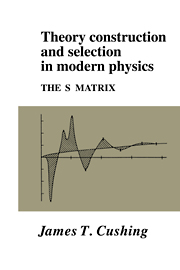Book contents
- Frontmatter
- Contents
- Preface
- Acknowledgments
- 1 Introduction and background
- 2 Origin of the S matrix: Heisenberg's program as a background to dispersion theory
- 3 Dispersion relations
- 4 Another route to a theory based on analytic reaction amplitudes
- 5 The analytic S matrix
- 6 The bootstrap and Regge poles
- 7 An autonomous S-matrix program
- 8 The duality program
- 9 ‘Data’ for a methodological study
- 10 Methodological lessons
- Appendix
- Notes
- References
- Glossary of technical terms (from physics and from philosophy)
- Some key figures and their positions
- Index
4 - Another route to a theory based on analytic reaction amplitudes
Published online by Cambridge University Press: 05 June 2012
- Frontmatter
- Contents
- Preface
- Acknowledgments
- 1 Introduction and background
- 2 Origin of the S matrix: Heisenberg's program as a background to dispersion theory
- 3 Dispersion relations
- 4 Another route to a theory based on analytic reaction amplitudes
- 5 The analytic S matrix
- 6 The bootstrap and Regge poles
- 7 An autonomous S-matrix program
- 8 The duality program
- 9 ‘Data’ for a methodological study
- 10 Methodological lessons
- Appendix
- Notes
- References
- Glossary of technical terms (from physics and from philosophy)
- Some key figures and their positions
- Index
Summary
Particularly important sources for this and subsequent chapters are correspondence with Professor Chew and Chew's own recent recollections (Chew, 1989), as well as the Festschrift for him (De Tar, Finkelstein and Tan, 1985), especially the interview it contains with Chew (Capra, 1985). Let us give an overview of the next few chapters. Geoffrey Chew is a central figure in this chapter because he was extremely important for the early development of this program and because he provides an example of how one person came to propose a radically new theoretical approach.
As we stated previously in Chapter 2, Chew at Chicago became aware of Heisenberg's S-matrix proposal from some lectures given by Wentzel (cf. Wentzel's (1947) review article). However, Heisenberg's ideas seem to have played no direct role in Chew's work leading to the modern S-matrix program. (Only around 1960 did Chew appreciate that he was working with what was essentially Heisenberg's S-matrix.) His publications from the late 1940s to the 1960s can be grouped into three fairly distinct phases:
a. 1948–1952: analysis of hadron scattering data within the framework of potential theory. Chew became an expert in that business.
b. 1953–1955: field-theory calculations, to various orders or in certain approximations, again for hadron processes.
c. 1956–1960: his work with Low, Mandelstam and Frautschi. This marked a transition to problems of greater scope and foundational importance.
All of this theoretical work received major impetus from the rapidly expanding data base provided by the large and active high-energy experimental programs existing after World War II.
- Type
- Chapter
- Information
- Theory Construction and Selection in Modern PhysicsThe S Matrix, pp. 89 - 114Publisher: Cambridge University PressPrint publication year: 1990



